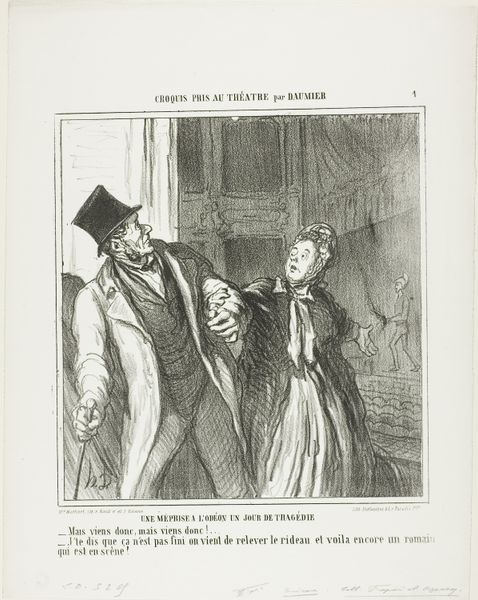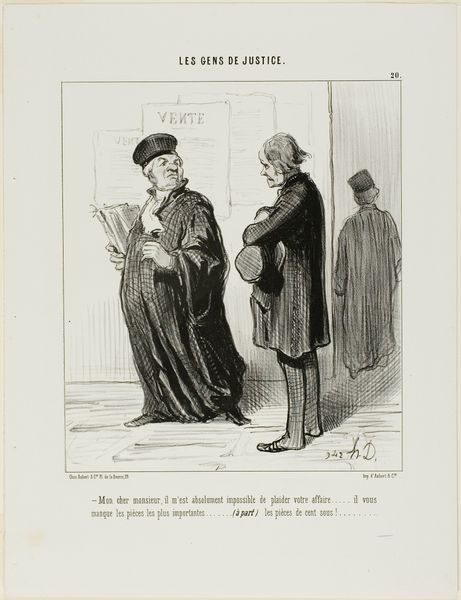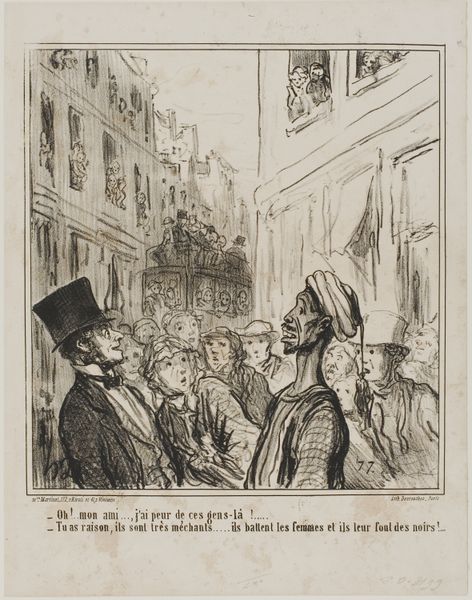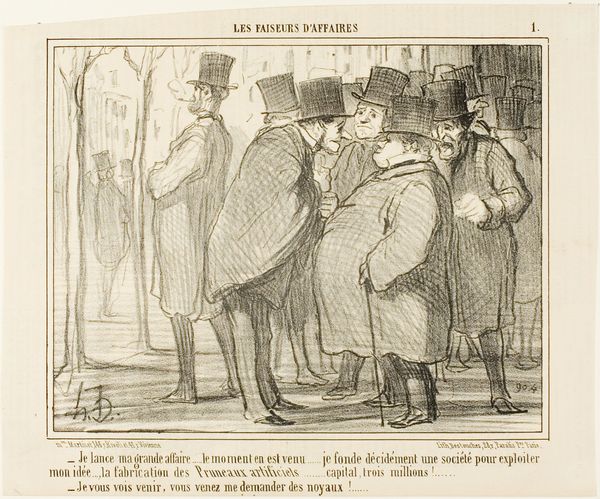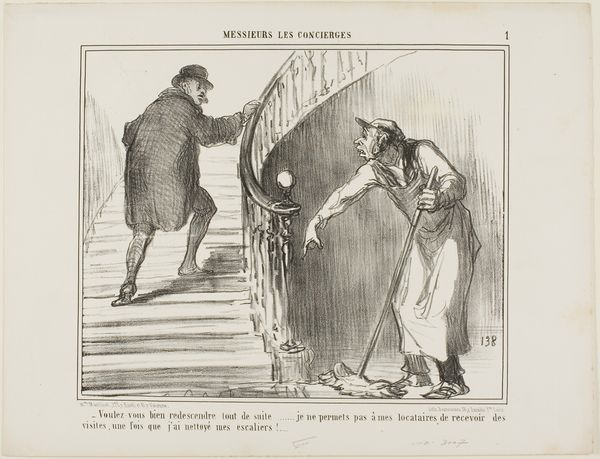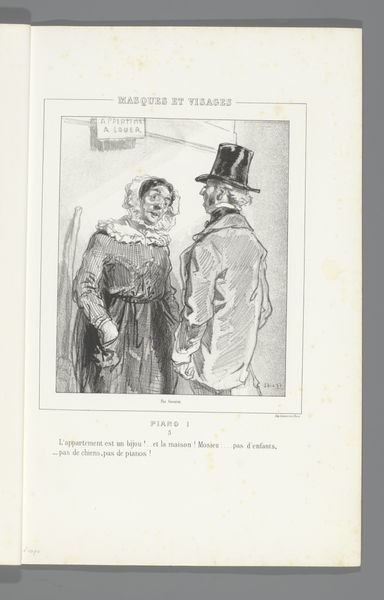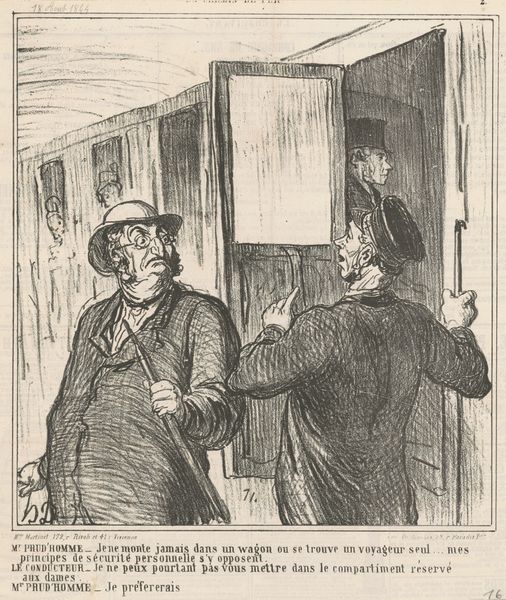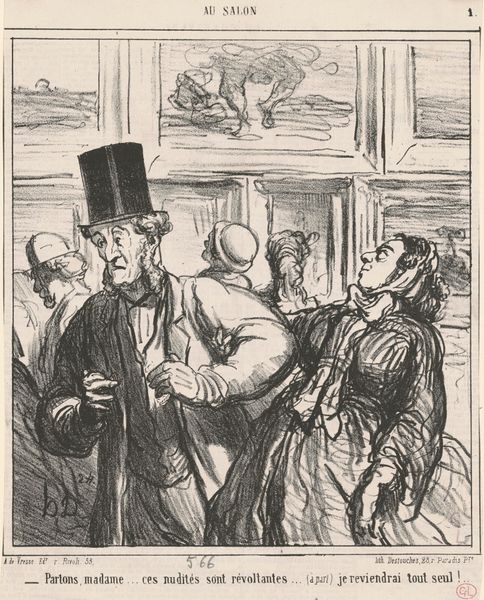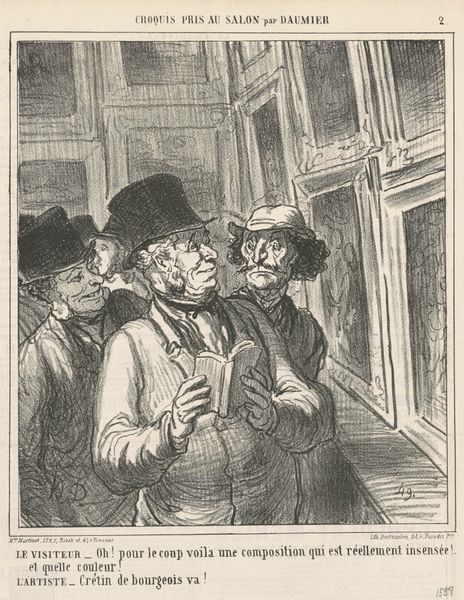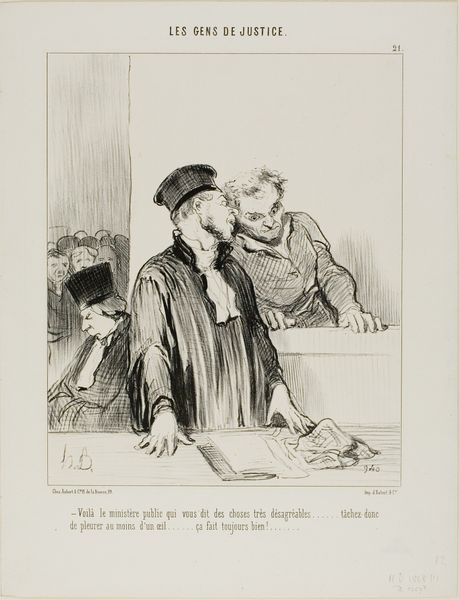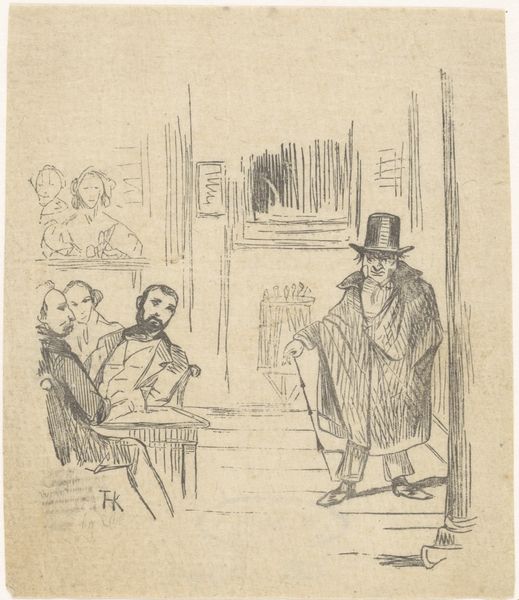
“What idiots! You paint a religious picture for them and they laugh.... they don't even have a devotion to art!...,” plate 4 from Croquis Pris Au Salon par Daumier 1865
0:00
0:00
drawing, lithograph, print, paper
#
drawing
#
lithograph
# print
#
french
#
caricature
#
paper
#
france
#
genre-painting
Dimensions: 220 × 222 mm (image); 361 × 275 mm (sheet)
Copyright: Public Domain
Curator: Daumier’s lithograph, created in 1865, bears the lengthy title, “'What idiots! You paint a religious picture for them and they laugh.... they don't even have a devotion to art!,' plate 4 from Croquis Pris Au Salon par Daumier.” It’s currently held in the collection of the Art Institute of Chicago. Editor: My first impression is a sort of sarcastic bewilderment. The stark hatching lines used throughout really highlight the disgruntled expressions on these art patrons. Curator: Absolutely. It’s as if Daumier captured a universal experience—the disconnect between the artist's intention and the audience's reception. The religious painting in the background is rendered almost abstractly. Editor: Right. And this very lack of clarity amplifies the humor, because they seem incapable of looking deeply. We get a real sense of the cultural milieu—an elite Parisian art salon, buzzing with critique, not appreciation. Notice how the formal details draw our eye immediately to their faces, locking in the mockery. Curator: Precisely. The expressions are key—the smug detachment versus the simmering irritation. Perhaps this juxtaposition shows an enduring social commentary about class, taste, and accessibility in art. Do you read a particular iconographic meaning here, with that central painting being blurred in the background? Editor: I'd agree, though I don't want to read too much into an image that is meant to be so candid. What remains important is Daumier’s awareness of audience. And his compositional use of that blankness, actually—drawing the eye toward the human drama taking place right in front of the painting. Curator: Ultimately, this print underscores the timeless nature of artistic frustration and society's engagement with sacred imagery, or the lack thereof. Editor: It certainly seems that the composition amplifies its themes beyond just what's literally depicted. What could be taken away, then? Well, Daumier pushes us to rethink those relations today—between artist and patron, reverence and derision, art and its interpretation.
Comments
No comments
Be the first to comment and join the conversation on the ultimate creative platform.
